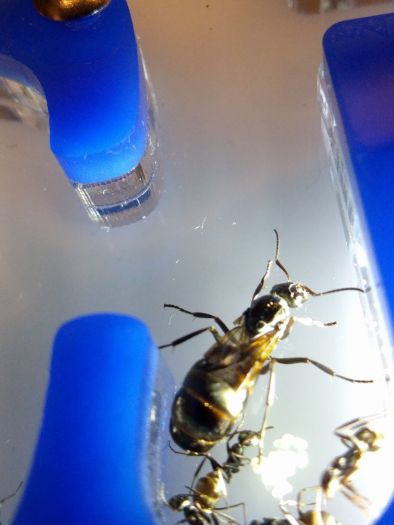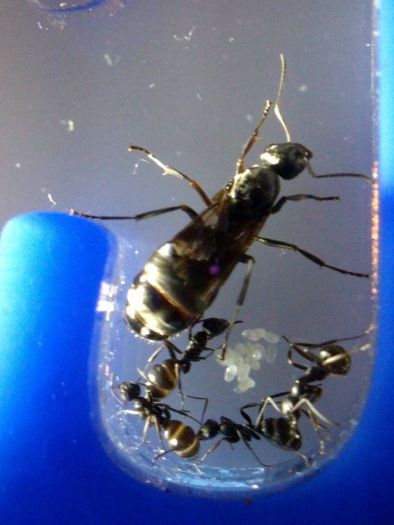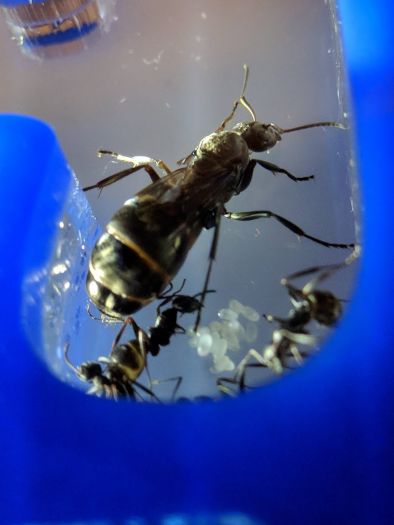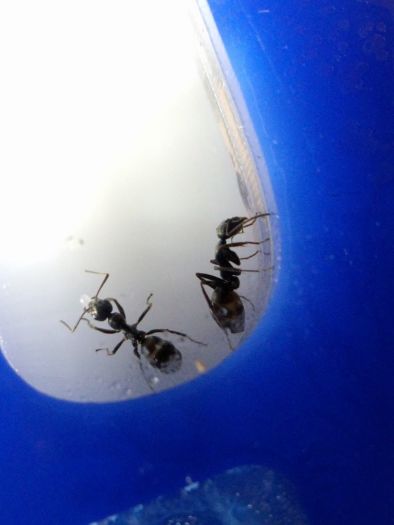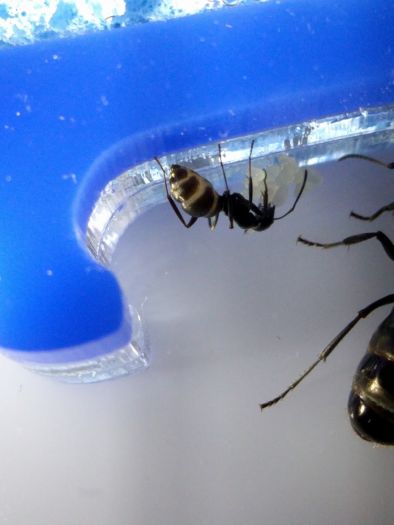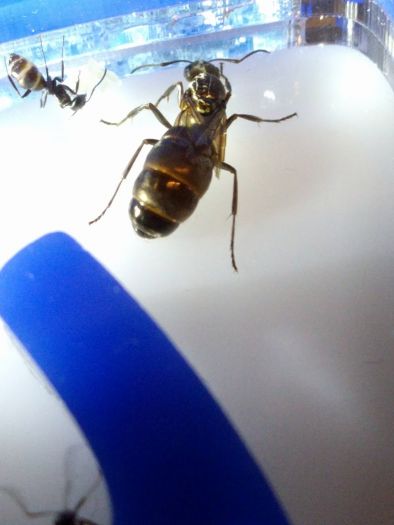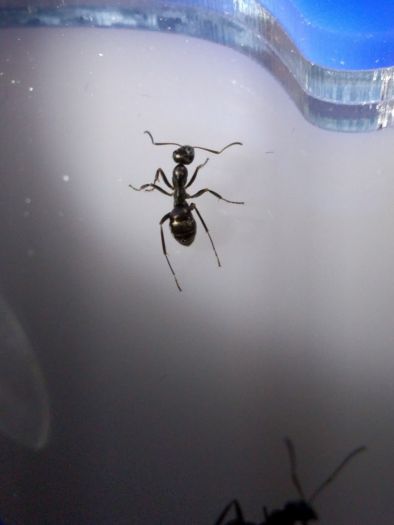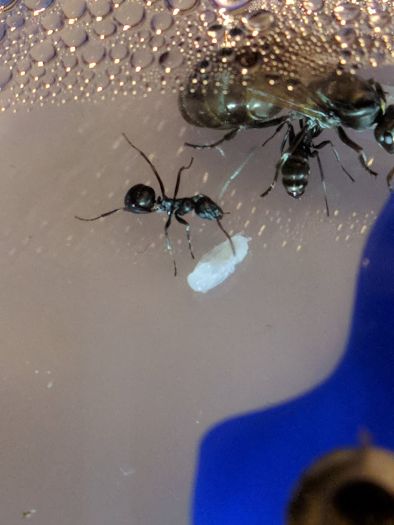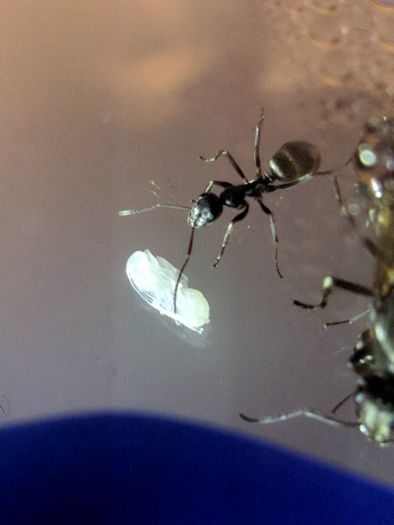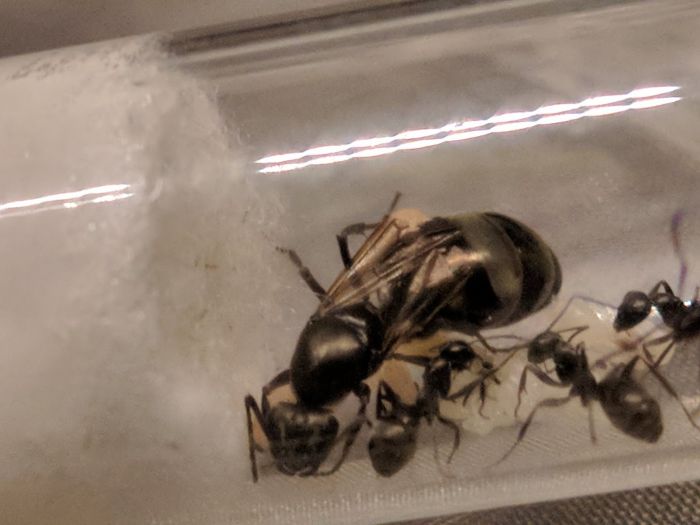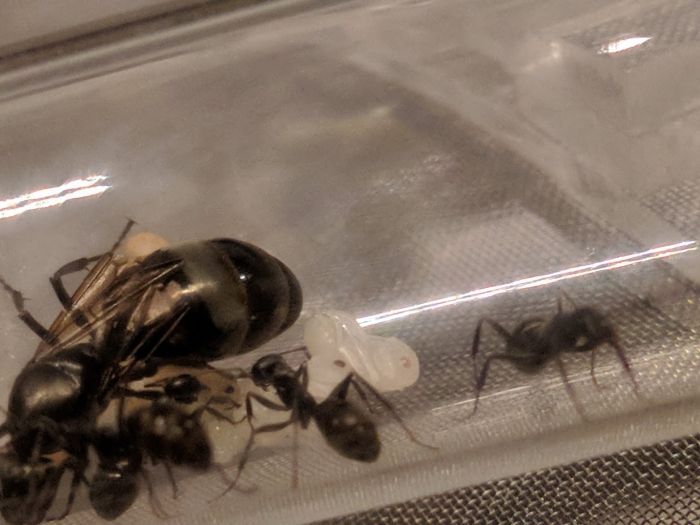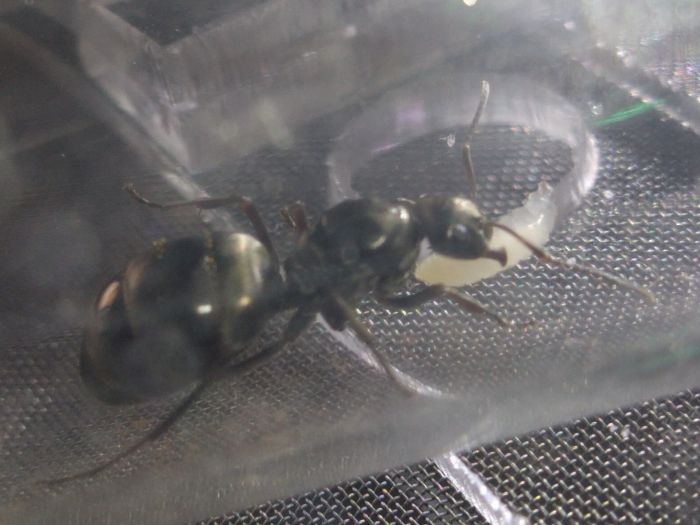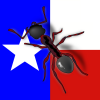So I have two colonies of what I thought were Formica subsericea. But while looking through Antweb to get an ID for a different colony, I noticed that F. subsericea and F. podzolica look 99.999% the same. These colonies of mine were caught in an area where both are native, so I'm now wondering if my F. subsericea could actually be F. podzolica.
1. Location of collection: Delton, Michigan. Circle Pines Center.
2. Date of collection: Mid July
3.Habitat of collection: Small beach surrounded by an oak/pine forest. Here is the link to the spot where I caught them. Here's the link to the habitat I caught them in. It's not the exact place, but it's the exact same habitat.
4. Length: Queen is 13mm, workers won't hold still long enough for me to get a measurement.
5. Coloration, hue, pattern, and texture: Black, shiny. Queens have shiny black gaster with a couple greyish stripes.
6. Distinguishing characteristics (ie: one petiole node/two petiole nodes, length, and orientation of any spines or bumps on the thorax or waist, head shape, eye size, the shape of mandibles, number of antennal segments, etc.)
7. Anything else distinctive: Queens super shy and easily startled, workers highly aggressive and curious.
8. Nest description: The mother colony was living under a stone in an abandoned fire pit on a beach. There was another colony (or maybe a satellite nest) nesting in the sand a dozen or so yards away.
9. Nuptial flight time and date: Late morning through early afternoon.
10. Post the clearest pictures possible:
